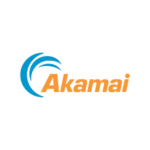BLOG
Pure Storage: Bringing Sustainability To Data Storage
 Firms of all sizes from every industry need a system to store and manage their data. To do this, organizations require powerful solutions and technologies. Unsurprisingly, these powerful data storage solutions consume vast amounts of energy, thus having an adverse impact on the environment. As a pioneer in all-flash data storage – data storage infrastructure that only includes flash memory drives rather than spinning disk drives – Pure Storage’s systems mitigate the toll on the environment from all of these data storage endeavors. With sustainability becoming increasingly important to companies, investors, and global citizens, Pure Storage is emphasizing and enhancing the environmental benefits of its data storage solutions over alternatives.
Firms of all sizes from every industry need a system to store and manage their data. To do this, organizations require powerful solutions and technologies. Unsurprisingly, these powerful data storage solutions consume vast amounts of energy, thus having an adverse impact on the environment. As a pioneer in all-flash data storage – data storage infrastructure that only includes flash memory drives rather than spinning disk drives – Pure Storage’s systems mitigate the toll on the environment from all of these data storage endeavors. With sustainability becoming increasingly important to companies, investors, and global citizens, Pure Storage is emphasizing and enhancing the environmental benefits of its data storage solutions over alternatives.
On January 17th, Pure Storage announced that it is now offering an enhanced Evergreen//One Energy Efficiency service level agreement (SLA) that guarantees energy efficiency for firms of all sizes. This new SLA is the first and only guarantee of energy efficiency in the enterprise storage-as-a-service market. The SLA allows companies to measure the energy usage of their data storage systems in Watts per tebibyte. If firms’ maximum Watts per tebibyte thresholds are passed, Pure Storage is committed to providing them with service credits and will undertake remediation actions at no cost. We note that this SLA fully aligns with Pure Storage’s mission to provide organizations with the most sustainable storage solutions.
This new SLA continues Pure Storage’s commitment to offering highly sustainable data storage products that contribute significant environmental benefits over alternative storage systems. Beyond the new SLA, Pure Storage offers the densest and most efficient flash modules on the market, enabling firms to leverage better data storage features at a lower power output and cost than from the company’s rivals. Pure Storage notes that its all-flash storage solutions operate up to 80 percent more efficiently than competing all-flash products. As Pure Storage develops its products with an evergreen architecture – so they do not grow obsolete or have to be replaced – the company can mitigate energy waste by extending the lifespan of its hardware and delivering non-disruptive over-the-air updates. We note that 97 percent of Pure Storage’s products are still in use six-years after they are purchased. Pure Storage is able to provide more effective data storage with less power output and physical equipment, enabling organizations to limit their environmental impacts and costs.
With more and more importance placed on sustainability and the environment, combined with the need for organizations of all kinds to store and manage their data, it is crucial for firms to be able to operate data storage solutions that are not detrimental to the planet. Pure Storage is capitalizing on this, as the company’s all-flash data storage systems are the most environmentally friendly on the market. As firms both large and small view the impact of their decision-making on the health of the planet, Pure Storage has leaned into its ethos, and stands to benefit from rising customer adoption.
Tesla Implements Overdue Price Cuts
Rather than fight it out with the U.S. government over whether a standard Model Y is a cross-over or an SUV, which would make it ineligible for the $7,500 federal tax incentive, Tesla recently enacted over-due price cuts on the Model Y, as well as its entire product line. With a 31 percent price reduction on a base level Model Y (inclusive of the tax credit) Tesla is now better positioned to retain its leading market share of EV sales in the U.S., which currently stands at 65 percent.
The move recognizes the unsustainable 30 percent-plus rise in Tesla’s list prices over the last two years brought about by supply chain bottlenecks and component shortages coming out of the global pandemic. Rather than rely on Tesla’s generous pricing umbrella, competitors will have to follow suit. The next battleground will be the composition of battery materials and critical minerals thresholds required to qualify for the full federal credit.
At the start of the New Year, Tesla’s core EV models, the Model 3 sedan and Model Y small SUV, became eligible for a U.S. federal income tax credit for the first time in over two years.
The most important price cut was on the base-level Model Y, which was reduced from $65,990 to $52,990—a 20 percent reduction. When factoring in the $7,500 federal tax credit, the price cut amounts to a 31 percent reduction in price. At its new price point, the base level Model Y for the first time fits comfortably within the $55,000 cap for passenger cars and cross-overs.
Over the last two years, Tesla Model 3 prices rose by over 30 percent, as component shortages and supply chain bottlenecks drove prices higher both during and immediately following the end of the pandemic in the U.S. These price increases were unsustainable, and inconsistent with growing the EV market further. The new Model Y price opens up an entirely new segment of buyers unable to afford a $66,000 car, and makes Tesla’s pricing more consistent with the intent of the Inflation Reduction Act, whose goal was to stimulate demand for non-carbon emitting vehicles, while making EVs more affordable. The previous federal tax credit had income limits, and some lawmakers complained that it subsidized EV purchases only by the wealthy. With a $125,000 single tax payer, $150,000 head of household, and $300,000 joint household income limit, the new tax credit opens up the market to a new demographic that may not have considered an EV purchase previously.
It will be interesting to see whether Tesla will be able to keep up with demand. The Model Y and Model 3 together account for about 65 percent of the EV market in the U.S. At the end of 2022, Tesla was just getting started in the ramp-up of its Austin Texas factory, which was said to be producing about 12,000 Model Ys per month. In Austin, production is limited to the Model Y. The ramping of production means that Tesla will achieve greater scale economies as time progresses, particularly as component shortages and supply chain bottlenecks continue to improve.
Dropbox: Moving from File Sync to Content Management
 With trailing twelve month sales of $1.9 billion, a market cap of $8.4 billion, $1.2 billion in cash, and zero bank debt, Dropbox (NASDAQ: DBX) is a leading provider of cloud-based file synchronization, backup, and content management software. Founded in 2007, the inspiration for the company came from CEO Drew Houston, who, as an M.I.T. student, began to conceive of an easier way to backup and share files.
With trailing twelve month sales of $1.9 billion, a market cap of $8.4 billion, $1.2 billion in cash, and zero bank debt, Dropbox (NASDAQ: DBX) is a leading provider of cloud-based file synchronization, backup, and content management software. Founded in 2007, the inspiration for the company came from CEO Drew Houston, who, as an M.I.T. student, began to conceive of an easier way to backup and share files.
Originally conceived as a way to conduct cloud-based file sync and backup—essentially replacing the need for a flash drive—Dropbox has evolved into a cloud-based content management software company, with subscription and monthly use plans for consumers, and businesses, which range in size from freelancers to the Fortune 100.
Since its inception Dropbox has deployed a bottoms-up freemium sales model, in which users typically sign up for a free service plan, and migrate over time to a paid plan, through either an annual subscription—greater than 50 percent of the time—or a monthly plan. Dropbox’s content management software plans range from free to more than $240 per year, depending on the level of functionality and customer support selected. The company’s unique freemium model has enabled it to reach and serve over 600 million registered users in 180 countries, who manage over 550 billion pieces of content.
At the end of Q3 2020, the company had 15.3 million paid users generating average revenue of nearly $128 per year, as compared to last year, when it had 14 million paid users, who generated an average $123. Roughly 12 million, or 80 percent of the company’s 15 million paid users use Dropbox for work purposes.
Dropbox does not break out revenue by vertical industry, however some of the more popular ones include technology, media and advertising, as well as construction. Other popular verticals include colleges and universities, manufacturing firms, consumer and retail, and financial services. As a content management tool, Dropbox is used by virtually all functional groups, including sales, marketing, product, design, engineering, finance, legal, and human resources.
Paying users as a percentage of the registered total is just three percent as of the most recent quarter. Dropbox believes that as many as 350 million, or roughly 60 percent of its non-paying, registered installed base of 585 million are high value targets, meaning that they exhibit many of the same characteristics as its installed base. By virtue of their existing registration, the company has created a large funnel from which to draw future paid subscribers. It can also reach and sign up prospective users at a fraction of the cost of many enterprise software companies that rely primarily on a direct sales force.
Over the last several years, Dropbox has expanded from a focus on consumers to small, mid-sized, and large businesses and non-profits, including colleges and universities. The company’s software is well-suited to workgroups of all sizes, which must collaborate across multiple functional areas and geographies. The company has been assisted by the growing trend to remote work, as stay-at-home orders mandated by governments, corporations, and non-profits, in the U.S. and abroad, in the wake of COVID-19, has increased the pace with which knowledge workers must collaborate regardless of their physical location.
Dropbox, whose revenues have grown from $1.1 billion in 2017, the year before it came public, to roughly $1.9 billion this year, has grown organically, with the assistance of only a few tuck-in acquisitions along the way. As Dropbox shifts its emphasis from consumer file sync and share to content management for businesses of all sizes, many greenfield opportunities lie ahead.
EverQuote: Rethinking the Insurance Industry
 Founded in 2011 by former M.I.T. classmates Seth Birnbaum and Tomas Revesz, and headquartered in Cambridge, Massachusetts, EverQuote is a leading online insurance marketplace. EverQuote’s goal is to revolutionize the insurance shopping experience for consumers and modernize the way insurance providers reach customers. In doing so, the company intends to become the largest online store for insurance policies in the U.S.
Founded in 2011 by former M.I.T. classmates Seth Birnbaum and Tomas Revesz, and headquartered in Cambridge, Massachusetts, EverQuote is a leading online insurance marketplace. EverQuote’s goal is to revolutionize the insurance shopping experience for consumers and modernize the way insurance providers reach customers. In doing so, the company intends to become the largest online store for insurance policies in the U.S.
Without any acquisitions, EverQuote has blossomed quickly, with a compound annual revenue growth rate of 32 percent over the last five years. Revenue has risen from $126 million in revenue in 2017, to $163 million in 2018, to $249 million last year. Unlike many VC-backed companies that have required multiple rounds of financing in the face of mounting losses, EverQuote was largely bootstrapped, with just $10 million of equity capital raised to fund the business before its IPO in June of 2018. In Q3 of 2019, the company generated its first non-GAAP operating profit, and has demonstrated consistent profitability in each of the last four quarters, with cash on the balance sheet rising steadily from $37 million at the end of Q2 last year, to $54 million this year.
Automotive insurance, EverQuote’s first addressable market, remains its largest, comprising over 80 percent of revenue. EverQuote’s online platform is facilitated by proprietary data and technology, which matches consumers with insurance options offered by carriers and independent agents tailored to their specific criteria. The criteria may include desired demographics, driving history, and the prospective policy holder’s driving track record.
EverQuote has invested heavily in data science, including machine learning, as well online advertising to efficiently match buyers and sellers of insurance policies. The company’s data assets include over two billion consumer-submitted data points that have come from 65 million quote requests, and 178 billion ad impressions, which have been acquired through its more than $650 million in advertising spending since inception. Over time, the company intends to fully automate the bidding process across most of its traffic sources, and is also working to achieve deeper integration with its insurance partners.
EverQuote boasts an expansive network of more than 100 insurance carriers, including the twenty largest property and casualty carriers in the United States, as defined by premium volume. In addition, the company partners with more than 8,000 insurance agencies. EverQuote’s leading partners include Progressive Casualty Insurance Company (which accounted for roughly 20 percent of revenue in 2018 and 2019) as well as StateFarm, Farmers, Esurance, Liberty Mutual, and Nationwide.
EverQuote gives consumers a single point of reference for insurance shopping. While EverQuote’s service is free for consumers, the company generates revenue through the sale of consumer referrals to insurance providers. According to EverQuote’s 2019 consumer survey, customers reported an average annual premium savings of $610 for insurance policies purchased through its marketplace.
EvreQuote has created a self-sustaining business model, having achieved EBITDA profitability and free cash flow generation in each of the last four quarters, although its progress is not reflected in the Street Consensus, which measures GAAP profitability. As an “asset light” business, like Google and Facebook, EverQuote generates more than $1 million in revenue per employee, and over half of its 300 employees are analysts, data scientists, and engineers. The company’s balance sheet is solid, even after the recent Crosspointe acquisition, as it will likely have more than $40 million in cash and no debt at the end of the current quarter.
IPG Photonics: Shining a Light on Factory Automation
 With trailing twelve month revenue of $1.25 billion, and a recent market cap of $8.7 billion, IPG Photonics (NASDAQ: IPGP), based in Oxford, Massachusetts, is a leading developer of fiber lasers, fiber amplifiers, and diode lasers. The company’s products are utilized primarily in the automotive, industrial machinery, consumer product, and medical industries.
With trailing twelve month revenue of $1.25 billion, and a recent market cap of $8.7 billion, IPG Photonics (NASDAQ: IPGP), based in Oxford, Massachusetts, is a leading developer of fiber lasers, fiber amplifiers, and diode lasers. The company’s products are utilized primarily in the automotive, industrial machinery, consumer product, and medical industries.
IPG Photonics was founded in Russia in 1990 by then 52 year-old physicist Dr. Valentin P. Gapontsev, Ph.D. Born at the outset of World War II, Dr. Gapontsev earned his Ph.D. in laser material science from the Moscow Institute of Physics & Technology in 1972. In addition to his numerous awards in science and technology, the Russian-born Gapontsev is known as one of the fathers of fiber lasers, stemming from his original work in laser material science. Today, the 81 year-old founder remains IPG’s Chairman and CEO, and through direct and indirect share ownership, controls the overwhelming majority of the company’s common stock. Originally, IPG produced custom glass and crystal lasers, wireless temperature meters, and laser components. The company subsequently shifted focus to high-power fiber lasers and amplifiers in 1992.
IPG debuted on the NASDAQ on December 13th, 2006 in a 10.4 million common stock offering, with 7.6 million coming from the company, and 2.8 million from shareholders. Merrill Lynch and Lehman Brothers were joint book-running managers for the offering, assisted by Needham & Company, Thomas Weisel Partners, and Jeffries.
IPG pursues a strategy of vertical integration, purchasing only the raw material inputs utilized for its products. Thus, it designs and manufactures nearly every key component used in its finished products, ranging from semiconductor diodes to optical fiber preforms, to finished fiber lasers, and amplifiers. The company also creates complementary products utilized with its lasers, such as optical delivery cables, fiber couplers, beam switches, optical processing heads, and chillers. Vertical integration enables the company to reduce manufacturing costs, improve quality control, as well as ensure product integration, and the protection of its intellectual property. IPG has also accumulated over 350 patents, with more than 80 more pending.
Automotive, broadly defined, is IPG’s largest vertical market, contributing roughly 20 percent of revenue. The company’s lasers are utilized for a variety of cutting and welding applications, including body welding across all types of production vehicles. In Q1 of this year, IPG received its first large order for Adjustable Mode Beam (ABM) lasers, which are utilized for electric vehicle battery welding. The new ABM lasers allow for “spatterless” welding, greater reliability, and higher wall plug efficiency. Another key application for electric vehicle batteries come from IPG’s pulsed laser, which is utilized for foil cutting.
With its cutting edge, unique proprietary technology, focus on vertical integration, and global reach, IPG is helping to illuminate the way to automated industrial production.
Care.com to be Acquired by IAC/Interactive
 IAC/Interactive (NYSE: IAC), the large internet and media conglomerate with a market cap of $21 billion, annual sales of roughly $4.8 billion, $3.4 billion in cash, and $3.1 billion in total debt, announced its intention on Friday, December 20th to acquire Care.com for $15 per share in an all cash deal. The valuation is, according to IAC, a 34 percent premium to Care.com’s closing share price on October 25, 2019, the last trading day before a press account indicated that a deal might be in the offing.
IAC/Interactive (NYSE: IAC), the large internet and media conglomerate with a market cap of $21 billion, annual sales of roughly $4.8 billion, $3.4 billion in cash, and $3.1 billion in total debt, announced its intention on Friday, December 20th to acquire Care.com for $15 per share in an all cash deal. The valuation is, according to IAC, a 34 percent premium to Care.com’s closing share price on October 25, 2019, the last trading day before a press account indicated that a deal might be in the offing.
With a history of acquiring somewhat distressed internet companies with solid brands and customer sets, IAC’s acquisition of Care.com is consistent with several of its previous purchases, including Ask Jeeves, and Angie’s List, which following its merger with HomeAdvsior is now called ANGI Home Services (NASDAQ: ANGI). Our understanding is that IAC will roll Care.com (previously) into the IAC/Interactive umbrella. As part of the deal, IAC has already assigned a new CEO to run Care.com. It would not be unreasonable to assume that pending changes to its management and operational structure, that IAC would either establish a tracking stock, or spin-off Care.com in the future, perhaps under a new name, or with additional businesses currently owned by IAC, or ones yet to be acquired.
Undeniably, it has been a challenging year for Care.com. Back in March of 2019, The Wall Street Journal published a damaging expose which criticized Care.com’s screening processes, and found hundreds of instances in which daycare centers listed on its website were not properly vetted. The WSJ expose prompted Care.com to immediately remove flawed agency listings as well as unveil new security and background checks to be paid by the company.
The June resignation of the company’s CFO, who remained in a transition role through August 31, the early August announcement that founder, Chairwoman, and CEO, Sheila Marcelo would transition to a new role as executive chairwoman, along with a reduction in revenue and earnings guidance, all contributed to a 70 percent contraction in its share price. In our opinion, the damage inflicted on Care.com’s brand is by no means permanent, though the cost to ensure consumer satisfaction with the level of background checking on caregivers remains in flux. An additional question mark has been the cost of assigning Care.com employees to fulfill caregiving roles for the corporations and universities utilizing its last minute backup care services.
Getting Care.com’s board to agree on a take-over bid may have been easier than hiring a brand new executive management team, which would have much work to do behind the scenes to re-establish a profitable, predictable growth trajectory. A new team would also be required to make decisions publicly, rather than behind the aegis of a large conglomerate, such as IAC/Interactive. We have no reason not to believe that all reasonable strategic buyers were consulted during the company’s sale process, so it is unlikely—though not impossible—that another suitor would enter the fray to make a higher bid Care.com.
Akamai Technologies: Zeroing in on Zero Trust
 Through internal development and acquisitions, cloud security has grown rapidly to become an $800 million annual run rate business for Cambridge, MA-based Akamai Technologies (NASDAQ: AKAM). The business is on track to generate nearly 30 percent of sales this year, up from 16 percent of sales for all of 2016. Through its early work with Kona Site Defender, which protects websites, web applications, and APIs against cyberattacks, Akamai developed a core competence in protecting against Distributed Denial of Service (DDoS) attacks against data center software assets. Such attacks involve the high-jacking of a large number of computer servers to overwhelm a target website or data center with malicious traffic.
Through internal development and acquisitions, cloud security has grown rapidly to become an $800 million annual run rate business for Cambridge, MA-based Akamai Technologies (NASDAQ: AKAM). The business is on track to generate nearly 30 percent of sales this year, up from 16 percent of sales for all of 2016. Through its early work with Kona Site Defender, which protects websites, web applications, and APIs against cyberattacks, Akamai developed a core competence in protecting against Distributed Denial of Service (DDoS) attacks against data center software assets. Such attacks involve the high-jacking of a large number of computer servers to overwhelm a target website or data center with malicious traffic.
With users, applications and devices moving outside the traditional perimeter of corporate firewalls, new approaches are required to ensure against the infection or theft of corporate data assets. To address this growing problem, Akamai has been developing a new cloud security architecture which it calls Zero Trust. The underlying principle behind zero trust is akin to that promulgated by former US president Ronald Reagan, who described the necessity to “trust, yet verify” any agreement that might be reached with the Soviet Union. In the same way that treaties must be verified, so must the identities of those who present a higher risk to data access, including contractors and employees in remote geographies. In such instances, corporations will wish to only grant precise access to what is needed, rather than broad access to a corporate network.
A key element of Akamai’s approach is centered around technology acquired last year from Janrain, which helps Akamai to decipher login history and access patterns, such as the city and time of day when such logins occur. With technology provided by Janrain, Akamai now helps customers in the area of identity proofing, authentication without using passwords, access control, web fraud prevention, and advertising fraud.
Last week, Akamai announced the tuck-in acquisition of KryptCo, a Cambridge, MA startup, whose engineers have developed mobile-based technology for multi-factor user authentication, which will fit into Akamai’s Enterprise Access Control Framework. Authenticating and assigning users the correct level of access to a data network remains a key technical challenge, as many approaches to access control are vulnerable to phishing attacks, in which user data, including alphanumeric login credentials, are targeted. Kryptco has developed a new approach, which does not require a pin number for authorization.
By next year, cloud security could contribute in excess of $1 billion in revenue and comprise about 34 percent of sales, which would be twice the percentage of revenue contributed just three years ago. The challenges posed by corporate data theft and espionage are likely to keep the category of zero trust in focus for many corporations and government entities for many years to come.
iRobot: Rethinking Lawn Care
 iRobot has thus far had its greatest success inside the home, as the Roomba and Braava for vacuum cleaning and floor mopping, respectively, account for virtually all of its revenue, and the lion’s share of the more than 20 million consumer robots it has sold since inception. For many years, however, iRobot has explored the opportunity to automate the mundane tasks of outdoor home maintenance. iRobot’s Looj, a $299 robot that cleaned gutters, was an early experiment that had a core following, but has since been discontinued as its market opportunity was ultimately limited in size.
iRobot has thus far had its greatest success inside the home, as the Roomba and Braava for vacuum cleaning and floor mopping, respectively, account for virtually all of its revenue, and the lion’s share of the more than 20 million consumer robots it has sold since inception. For many years, however, iRobot has explored the opportunity to automate the mundane tasks of outdoor home maintenance. iRobot’s Looj, a $299 robot that cleaned gutters, was an early experiment that had a core following, but has since been discontinued as its market opportunity was ultimately limited in size.
It may come as a surprise to some that the largest outdoor consumer robot category is lawn mowing. Robotic Lawn Mowers (RLMs) have been established for many years in Europe, where the category has seen its largest number of early adopters, and represents an annual revenue opportunity of $400 million.
iRobot has been eyeing the market for RLMs for at least five years, as evidenced by its trademark application in 2014 for Terra, the Latin word for earth or ground, in which the company noted that Terra would be used for robotic lawnmowers, as well as structural and replacement parts and fittings. Terra, iRobot’s long awaited RLM will launch later this quarter is Germany, with plans for a US beta program later this year. Terra utilizes a new wireless approach to guiding an outdoor robot, which gives it a technological edge over other products in the category that require the placement of embedded boundary wires to outline the path of the robot so that it does not go astray.
Unlike in the US, the market for robotic lawnmowers is well-established in Europe, particularly in Sweden, Germany, France and Switzerland, where an aging, relatively homogenous population, often attuned to environmental concerns, and burdened by expensive landscaping services have become the earliest adopters of robotic lawnmowers. European lawns, moreover, are typically smaller, flatter, and have fewer obstacles embedded, and therefore lawn mowing can be more easily automated.
Several of the industry’s largest players are based in Europe, including Husqvarna, the Swedish provider of outdoor power products, which introduced its first robotic lawnmower in 1995. It also markets products under the Gardena and McCulloch consumer brands. According to market research estimates we have seen, Husqvarna may control as much as 50 percent of the European market. Other participants include Robert Bosch, Honda, and John Deere, which sells a robotic lawnmower in Europe, but not in the US.
The common threads and limitations of the current generation of robotic lawn mowers—in addition to the use of boundary wire—are high retail prices, often in excess of $1,500. Challenges that remain include the ability to consistently cut grass in lots greater than 1/3 of an acre in size, cutting grass in excess of 2” high, as well as certain types of rough grass. Other challenges include navigating garden beds, trees, rocks, and other lawn debris, where additional boundary wire and sensors must demarcate the areas to be avoided by the robot.
iRobot’s heritage for producing easy to use category leading indoor robots, combined with a new wireless approach, along with its core competence in visual navigation technology suggest considerable for potential for Terra.
Care.com: Addressing Safety in the Gig Economy
 As the internet has transformed commerce, social, and work life over the last 10 years, consumers have become increasingly willing to entrust personal safety to operators of websites that provide matching services. Dating over the internet, once taboo for fear of linking up with a sociopath, has given way to comfort with finding in some cases, partners for life. Finding and accepting transportation over the internet comes along with the risk of placing one’s personal safety in the hands of a driver whose qualifications and personal habits are something of a mystery.
As the internet has transformed commerce, social, and work life over the last 10 years, consumers have become increasingly willing to entrust personal safety to operators of websites that provide matching services. Dating over the internet, once taboo for fear of linking up with a sociopath, has given way to comfort with finding in some cases, partners for life. Finding and accepting transportation over the internet comes along with the risk of placing one’s personal safety in the hands of a driver whose qualifications and personal habits are something of a mystery.
On Friday, March 8th, the day after Care.com released Q4 results, The Wall Street Journal published a highly critical article about Care.com’s screening practices for caregivers in its online edition, entitled, “Care.com Puts Onus on Families to Check Caregivers’ Backgrounds—With Sometimes Tragic Outcomes; The largest online marketplace for such services says its members are responsible for ensuring background checks are performed.” The article was also published on the first page of the Journal’s week-end print edition. Without reviewing here the entire contents of the article, the most salient points were that the Journal had found hundreds of instances in which daycare centers were listed on Care.com’s website as state-licensed, but were not. In at least one instance children died while under the care of a non-licensed facility.
The article was also critical of Care.com’s screening procedures. Care.com’s preliminary screening checks multijurisdictional databases, as well as the National Sex Offender public website, as part of a manual process, which can take up to 48 hours, and which rejects an estimated 10 percent of those seeking a listing within 24 hours. Existing and prospective customers can also purchase additional packages that range in price from $59 to $300 to conduct a more detailed level of screening.
The article, while specific to Care.com, raises the question of responsibility and liability for companies operating in the gig economy. Like LinkedIn, Indeed, and other jobsites, Care.com does not conduct employment level background checks. Uber, for example, like Care.com, conducts a background check on its service providers, ie. drivers. This includes a Motor Vehicle Record review, as well as a criminal background check. Background checks for Uber drivers, according to the Uber website, are conducted by Checkr, a third party background check provider that is accredited by the National Association of Professional Background screeners.
On March 11th, Care.com filed an 8-K with the SEC in which it noted that it would no longer allow caregivers that are new to the platform to engage with the platform until the preliminary screen has been completed. The company also disclosed that it was exploring solutions to help verify the identity of both caregivers and care seekers on its platform. Care.com will also be looking at potential changes regarding notification of members on its websites when, for example, a caregiver is no longer allowed to provide services on the platform. Care.com also eliminated all listings of daycare centers that were not updated and reviewed by the daycare center itself. Finally, Care.com announced a new board level committee that will oversee the company’s safety and cybersecurity programs.
To be sure, the concept of guarding personal safety over the internet continues to evolve. It is likely that industry best practices will emerge over time. However, there is still likely to be an element of trust every time someone steps into an Uber or Lyft-driven vehicle, accepts an invitation for lunch through an online dating site, hires a person based in part on job experience posted on a website, or employs a care-giver in their home.
Gaia: Gaining Ground in Internet Streaming
 “If we want to set out on the arduous search for the truth, we must all summon up the courage to leave the lines along which we have thought until now, and as the first step begin to doubt everything that we previously accepted as correct and true. “
“If we want to set out on the arduous search for the truth, we must all summon up the courage to leave the lines along which we have thought until now, and as the first step begin to doubt everything that we previously accepted as correct and true. “
—Erich von Daniken
With trailing 12-month sales of $40 million and a market cap of roughly $220 million, Gaia, based in Boulder, Colorado, is a leading provider of new age streaming video services. With over 500,000 subscribers to its monthly service, the company focuses on several genres, including yoga, seeking truth, transformation, and alternative healing, and thus occupies a unique niche within the streaming content landscape. The company boasts over 8,000 titles, 90 percent of which are unique to Gaia. Subscribers reside in 185 countries, with about 30 percent of revenue coming from international markets.
Though the majority of viewership is focused on several thousand titles in its library, no single title accounts for more than one percent of viewership. The company continues to create new video content in its Colorado studios.
Gaia was founded as Gaiam in 1988 in Boulder, Colorado by entrepreneur Jirka Rysavy, who was also a founder of Corporate Express, and Crystal Market, a natural foods market later acquired by Wild Oats Market. Gaiam began with a mission to provide products to those in pursuit of a healthy lifestyle and a respect for the environment, based on ecological sustainability, consistent with the corporate ethos of other Boulder-based companies, such as Wild Oats Market, and Celestial Seasonings. Gaiam, the company’s original name, came about as the fusion of Gaia, the ancient Greek deity, who represented the idea of the earth as a living system, and “I am,” meant to evoke a sense of connectedness with the planet.
2016 was a transformational year for Gaiam. In May, the company sold its equity interest in Natural Habitat, its eco-travel subsidiary, for $13 million in cash. Later that month it announced the sale of its Gaiam Brand business to Sequential Brands Group (NASDAQ: SQBG) for $167 million. The sale included the company’s branded yoga, fitness and wellness consumer products, and content, with the exclusion of the streaming rights to that content. The sale of its branded products business allowed Gaiam to focus exclusively on streaming video services and DVD distribution, and the company changed its name to Gaia. The new company utilized $77 million to repurchase 9.6 million Class A common stock shares, and 840,000 vested stock options at a fixed price of $7.75 per share in a tender offer completed in July of 2016. This transaction reduced its shares outstanding from 24.6 million to 15 million. By the end of 2016, Gaia had over 200,000 subscribers to its internet video service.
In March of 2018, Gaia executed a secondary stock offering, and sold 2.3 million Class A common shares at $15 per share. In connection with the offering, certain directors and officers of the company agreed to purchase roughly 135,000 shares. Gaia’s advisor for the transaction was Roth Capital Partners. The offering was led by B. Riley FBR, Lake Street Capital Markets, and Dougherty & Company. Gaia used a portion of the $32 million in net proceeds to pay down $12.5 million in debt. In early September of 2018, Gaia announced that it was about to cross the 500,000 subscriber mark, which compared to 311,000 subscribers in the prior year, and marked a major milestone in its quest to achieve one million subscribers by the end of 2019.
Gaia has taken an aggressive approach to marketing by investing 90 to 120 percent of streaming revenue in the last few quarters in customer acquisition as part of its goal to sign up one million subscribers by the end of next year. Year to date revenue has grown an impressive 58 percent, though its operating losses have widened to $25 million, from $19 million over the same period last year. The company currently intends to utilize most of the $31 million in cash on its balance sheet, along with a secured line of credit of $12 million to aggressively target new customers over the course of the coming year, with the intent of letting its cash balance fall to between $2 and $5 million, before it begins to generate profit on a consistent basis.
Gaia recently launched a new channel, focused on alternative healing, drawing upon roughly 1,000 titles from its existing library, in an effort to more effectively merchandise the content, and attract new subscribers with interest in this segment. The company also intends to launch a new premium service that will be priced in the vicinity of $299 per year, which will include access to live events.







